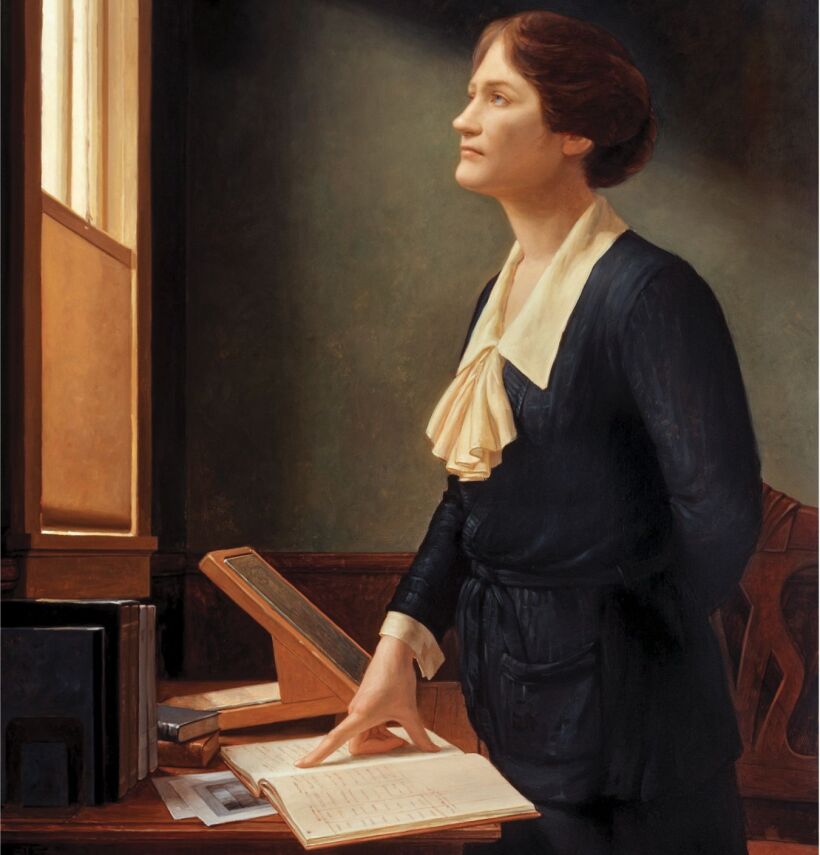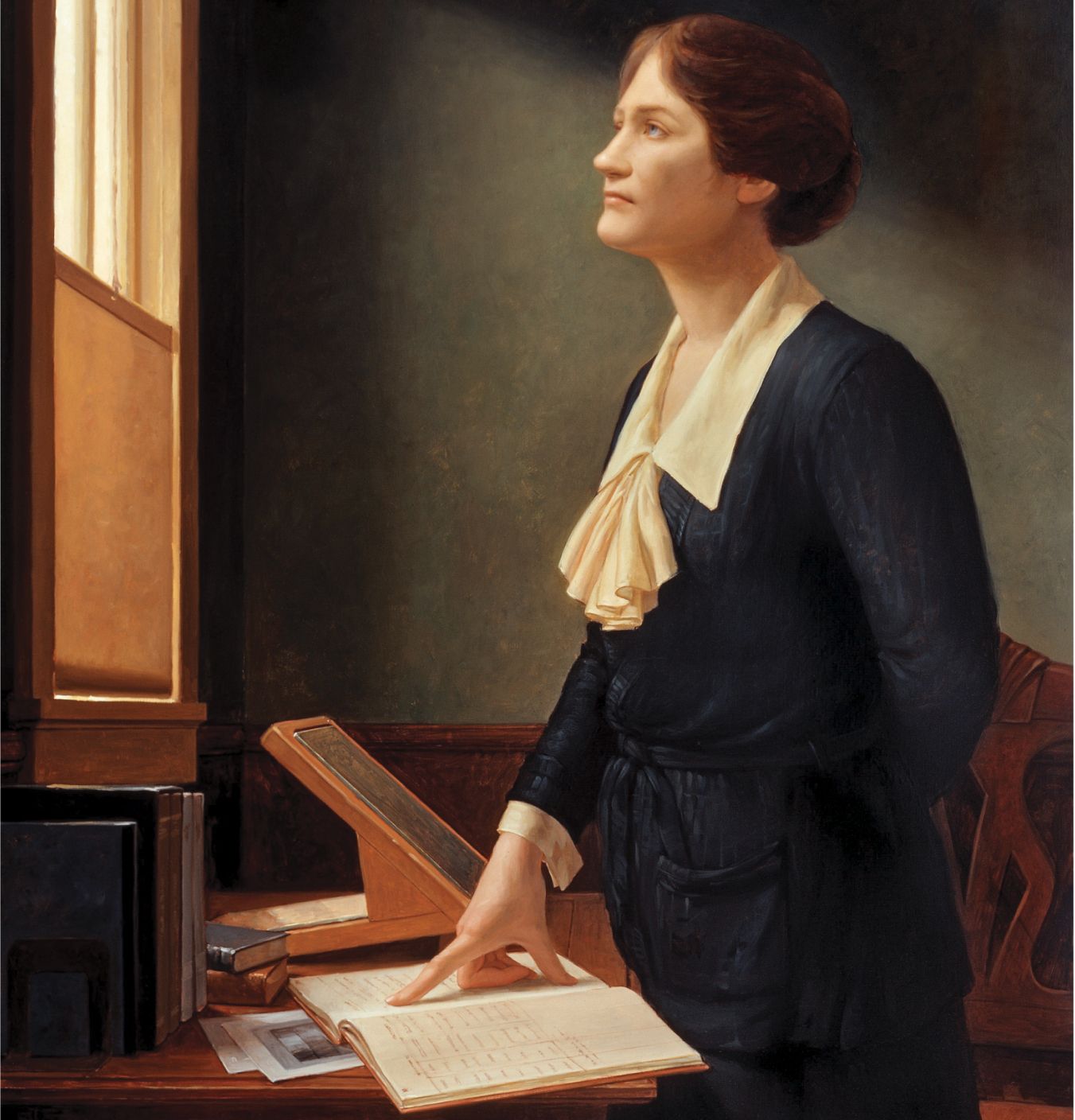Breaking the glass ceiling of 20th-century astronomy
DOI: 10.1063/PT.3.4454
Cecilia Payne-Gaposchkin was one of the most gifted astrophysicists of the 20th century. But as Donovan Moore shows in What Stars Are Made Of: The Life of Cecilia Payne-Gaposchkin, her career was hindered by what was at the time an almost insurmountable handicap: her gender. Payne-Gaposchkin pounded on astronomy’s glass ceiling, and she was the first to put major cracks in it. But in many places, the ceiling was impervious to her effort and intellect. She deserves more praise for her accomplishments than she has received, as she is far less well known than figures like Annie Jump Cannon and Henrietta Leavitt, who came just a bit before her, and Margaret Burbidge and Vera Rubin, who came after. Fortunately, Moore’s new biography of this brilliant scientist is a must-read.

Cecilia Payne-Gaposchkin (1900–1979)
HARVARD UNIVERSITY PORTRAIT COLLECTION, GIFT OF DUDLEY AND GEORGENE HERSCHBACH © PATRICIA WATWOOD, H743

Payne-Gaposchkin left the UK for Boston in 1923 with one family heirloom, her father’s violin, which she was forced to pawn while a graduate student. She should have been Harvard University’s first female recipient of a PhD in astronomy. Harvard had no astronomy department, however, and the physics department refused to admit women as degree candidates, so she was awarded her doctorate through Radcliffe College in 1925. Later, when starting her job as a technical assistant at the Harvard College Observatory, she was given a lower salary than the male fellows. To make ends meet between the end of her graduate fellowship and her first professional paycheck, she had to pawn her jewelry.

Yet her determination to learn about the universe led Payne-Gaposchkin to uncover one of its fundamental truths: that most of it is made of hydrogen. In doing so, she overturned the principle of uniformity, long held up as a law of physics, which stated that the universe was composed primarily of the same elements that dominated Earth’s crust. Her accomplishments were initially pooh-poohed by her field’s most eminent scientists, including her external PhD adviser Henry Norris Russell, who forced her to change the conclusion of her dissertation and say that her results must be spurious. But, as we now know, she was right.
Four years later Russell would conclude, in a paper in which he took credit for the discovery, that the stars and the universe are indeed made almost entirely of hydrogen. Well into the 1970s, Russell’s 1929 paper was regularly cited as the one that established the dominance of hydrogen in the universe. Payne-Gaposchkin’s work was important enough that a Nobel Prize should have been hers, but because of Russell, that was not to be—she was never even nominated.
Other important rewards did come her way, though often not as soon as she deserved them. Payne-Gaposchkin became the first tenured female professor of astronomy at Harvard, but only after serving three decades in the lesser position of technical assistant. That lengthy period of underemployment was no accident. Harvard president Abbott Lawrence Lowell had declared, according to Harvard College Observatory director Harlow Shapley, that “Miss Payne should never have a position in the University as long as he was alive.” Lowell, who stepped down as president of Harvard in 1933 and died in 1943, was unfortunately right: Payne-Gaposchkin was only promoted to the faculty in 1956. In 1976 she became the first woman to receive the American Astronomical Society’s most prestigious honor, which, ironically for Payne-Gaposchkin, is called the Henry Norris Russell Lectureship.
Payne-Gaposchkin’s autobiography was Moore’s most important source, and so he uses her own words to tell much of her story, almost as if he wrote from a series of extended interviews with his late subject. What Stars Are Made Of flows like a historical novel, and Moore has a particular gift for weaving details about the cultural richness of early-20th-century Cambridge, Massachusetts, into his prose. Moore explains both the scientific details and the overall significance of Payne-Gaposchkin’s work clearly, and he does so without jargon. His descriptions of Payne-Gaposchkin’s Forrest Gump–like habit of running into some of the greatest physicists of the 20th century adds to the readers’ fun; her mentors and teachers included such luminaries as Niels Bohr and Ernest Rutherford.
But reading about the sacrifices Payne-Gaposchkin made, and the burdens under which she suffered, was often painful. How could my predecessors have worked so hard to undermine the work of one of the greatest minds in 20th-century astrophysics? The book also prompts uncomfortable questions about the modern scientific community. In the year 2020, women have softened most of the barriers for participation in astrophysics, but that progress is recent, and it is far from complete. Who is our modern Payne-Gaposchkin? Is that person undervalued and denied opportunities because of their gender or gender identity? Their skin color or country of birth? A disability?
Most of us in science can probably relate to one part of Payne-Gaposchkin’s story: She became a scientist because she was encouraged and inspired to do so by dedicated teachers. At age 12 her path led her to Dorothy Daglish’s science classroom at St Mary’s Catholic school. Next, at St Paul’s School for Girls, she had the good fortune of finding another inspiring and caring teacher, Ivy Pendlebury. Most, or perhaps all, of us chose a path into science because we had similar experiences. We should pause and say thank-you to all of the Miss Daglishes and Miss Pendleburys we’ve been lucky enough to meet. This, then, is my chance to say thank-you to Chris Tellefson, my high school physics teacher in State College, Pennsylvania, in the early 1970s, who has no idea how important her teaching, guidance, and advice were to me.
More about the Authors
David Weintraub is a professor of astronomy and director of the Communication of Science and Technology Program at Vanderbilt University. He is the author of Life on Mars: What to Know Before We Go (2018), Religions and Extraterrestrial Life: How Will We Deal With It? (2014), How Old Is the Universe? (2010), and Is Pluto a Planet? A Historical Journey Through the Solar System (2006).
David A. Weintraub. Vanderbilt University, Nashville, Tennessee.




